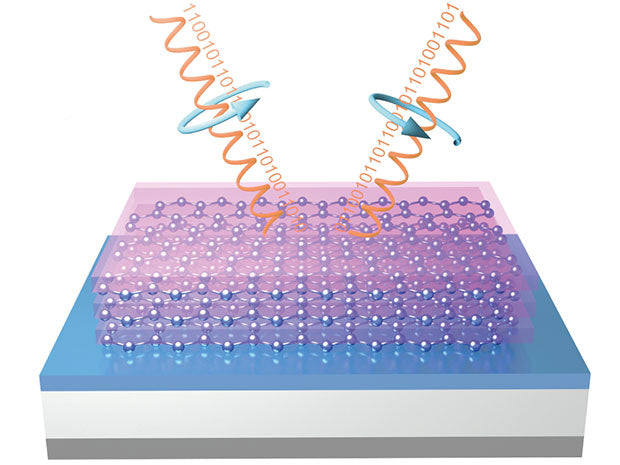more »
Graphenea's graphene has been used to make an optical isolator, an important component of optical communication circuits, in the terahertz part of the spectrum. Terahertz communication circuits would boast wireless transmission rates 10 times faster than they are today. Scientists in Switzerland constructed a graphene-based device that transmits light only one way. The device, functionally similar to electronic diodes, could also be used in terahertz lasers.
The research, published last month in the journal Nature Communications, makes use of stacks of alternating CVD graphene and polymer layers to produce a non-reciprocal isolator. The device filters backwards terahertz (THz) radiation, preventing reflected rays coming back to the source. Optical isolators are most commonly used at the output of high-power lasers, to prevent laser damage or instabilities caused by returning radiation.

Illustration: EPFL
The THz part of the spectrum provides a window of opportunity for developing faster communication networks, because THz waves oscillate at frequencies 10 times faster than GHz waves used in modern communication. Developing devices for this part of the spectrum is a challenge that is being addressed by researchers worldwide. Materials commonly used in telecom devices tend to absorb THz radiation, leading to detrimental losses. Graphene, on the other hand, is nearly transparent in most parts of the spectrum, including THz waves, and hence is a key material of choice for THz research.
The researchers, based at EPFL, Geneva and Lausanne, devised a method to get graphene to interact only with THz radiation polarized a certain way. By placing their devices in a strong magnetic field, they made light that is circularly polarized one way to be reflected off the device, while all other light was absorbed. This is effectively a filter that will find its use in optical circuits of the future. The researchers think that modified variants of their device could even be used in today's communication circuits.
via Graphenea
